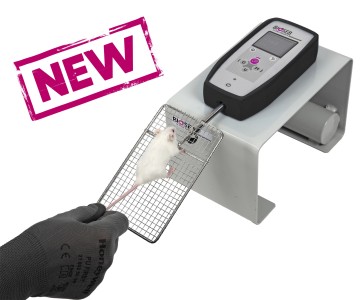Authors
S. Mandillo, V. Tucci, S.M. Hölter, H. Meziane, M. Al Banchaabouchi.
Lab
Institute of Developmental Genetics, Gesellschaft für Strahlenforschung-National Research Center for Environment and Health, Neuherberg, Germany.
Journal
Physiological genomics
Abstract
Establishing standard operating procedures (SOPs) as tools for the analysis of behavioral phenotypes is fundamental to mouse functional genomics. It is essential that the tests designed provide reliable measures of the process under investigation but most importantly that these are reproducible across both time and laboratories. For this reason, we devised and tested a set of SOPs to investigate mouse behavior. Five research centers were involved across France, Germany, Italy, and the UK in this study, as part of the EUMORPHIA program. All the procedures underwent a cross-validation experimental study to investigate the robustness of the designed protocols. Four inbred reference strains (C57BL/6J, C3HeB/FeJ, BALB/cByJ, 129S2/SvPas), reflecting their use as common background strains in mutagenesis programs, were analyzed to validate these tests. We demonstrate that the operating procedures employed, which includes open field, SHIRPA, grip-strength, rotarod, Y-maze, prepulse inhibition of acoustic startle response, and tail flick tests, generated reproducible results between laboratories for a number of the test output parameters. However, we also identified several uncontrolled variables that constitute confounding factors in behavioral phenotyping. The EUMORPHIA SOPs described here are an important start-point for the ongoing development of increasingly robust phenotyping platforms and their application in large-scale, multicentre mouse phenotyping programs.
BIOSEB Instruments Used
Grip strength test (BIO-GS3)
Source :
http://physiolgenomics.physiology.org/content/34/3/243.short

 Pain - Thermal Allodynia / Hyperalgesia
Pain - Thermal Allodynia / Hyperalgesia Pain - Spontaneous Pain - Postural Deficit
Pain - Spontaneous Pain - Postural Deficit Pain - Mechanical Allodynia / Hyperalgesia
Pain - Mechanical Allodynia / Hyperalgesia Learning/Memory - Attention - Addiction
Learning/Memory - Attention - Addiction Physiology & Respiratory Research
Physiology & Respiratory Research











![Dynamic Weight Bearing 2.0 – Postural Module [Add-on]](https://bioseb.com/733-home_default/dynamic-weight-bearing-20-add-on-postural-module.jpg)
























 Pain
Pain Central Nervous System (CNS)
Central Nervous System (CNS) Neurodegeneration
Neurodegeneration Sensory system
Sensory system Motor control
Motor control Mood Disorders
Mood Disorders Other disorders
Other disorders Muscular system
Muscular system Joints
Joints Metabolism
Metabolism Cross-disciplinary subjects
Cross-disciplinary subjects CONFERENCES & MEETINGS
CONFERENCES & MEETINGS 